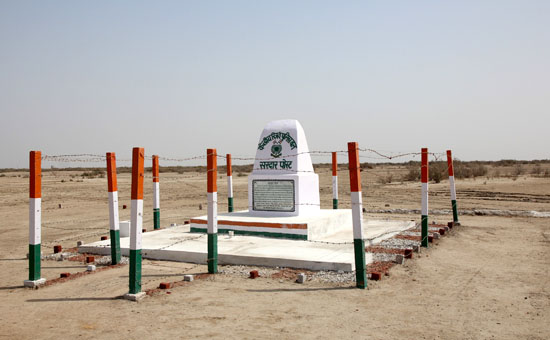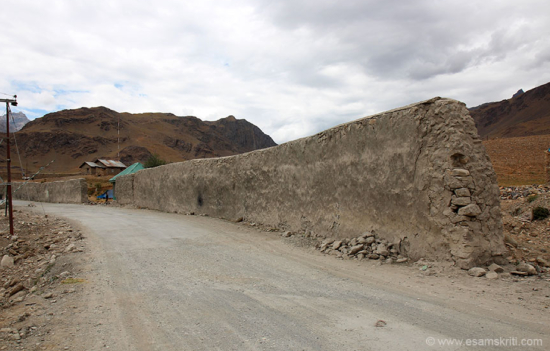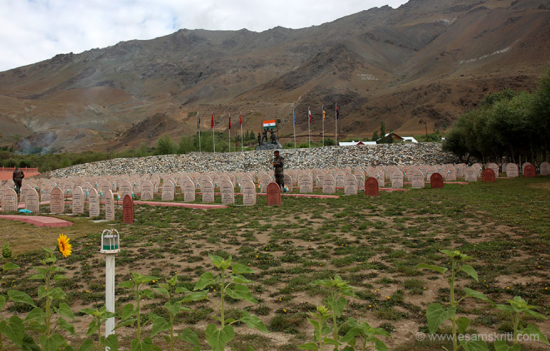- Briefly
know about the five India Pakistan wars of 1948, 1965, 1971, 1999, 2025 and
three Cease-fires. Eventually, India has to fight her own battles. Indians need
to put their heads down and work hard if we are to realize potential. China and
Pakistan will try to make India fail.
This
piece covers War of 1948, 1965, 1971, 1999 and 2025. It is based on inputs from
Defending India by former External
Affairs Minister Jaswant Singh and Anatomy
of a Flawed Inheritance by the late foreign secretary J N Dixit.
1. War 1948
Background:
Through a smart combination of a carrot and stick, Sardar Patel managed to
merge the Muslim majority states of Junagarh, Hyderabad and Bhopal. However,
the Maharaja of Kashmir was undecided about accession to India or Pakistan. Read All
you wanted to know about accession of J&K to India
On
22nd October 1947 the raiders from Pakistan crossed into undivided J & K.
They met with hardly any resistance. On 22.10.47 the Pakistan army headquarters
informed Delhi that 5,000 tribesmen had captured Muzzaffarabad and were moving
towards Srinagar. The Maharaja of Kashmir sent an urgent message to Delhi to
save Kashmir from the invaders.
Since
J & K was not a part of India the Cabinet decided against intervening. The
Maharaja subsequently signed the Instrument of Accession on 26.10.1947 by which
the entire state became a part of the India.
Starting
27.10.47 Indian troops began to be flown into Srinagar. By early November the
troops had consolidated their positions. Read The Battle of
SHALTENG-Story of How Srinagar was saved in 1947 by Col Bhatnagar (retd)
Nehru
was meanwhile trying to persuade Pakistan to stop helping the raiders. Failing
to receive any response, Nehru on 1.1.1948, informed the United Nations that
due to the operations carried out by Pakistan an international conflict was in
the offering.
Ceasefire1-
UN Resolutions stated that 1. Pakistan was to withdraw all its troops from
Jammu and Kashmir. 2. After that India were to withdraw the bulk of its
security forces but retain sufficient numbers to maintain law and order in the
state and 3. A plebiscite was to be held to determine the will of the people.
Pakistan
never withdrew its troops but the point up to which Indian troops had pushed
them back became the Line of Control. Therefore, the area that India could not
recover became Pakistan Occupied Kashmir.
Pakistan keeps referring to the UN Resolution but
does not comply with resolution 1 i.e. to withdraw all its troops from J&K.
2. 1965 War
Background:
The first war had not found a lasting solution to Jammu and Kashmir. After the
debacle of 1962, demise of Nehru, there seemed a vacuum in India. Militarily
India was adjusting; its economy was not self-sustaining. In Lal Bahadur
Shastri the country had a diminutive, homespun sought of person as compared to
the larger than life personality of Nehru. To Pakistan India came across as a
dispirited nation. It was a time Pakistan could take over Kashmir.
The
plan was to create a popular uprising in the state; Pakistan would then move in
to assist it, cut off the valley from the rest of the country. I doubt whether
they had expected India to open another front.
Before the big war, a smaller one was contrived in Kutch, in April 1965. Border
disputes were created where there were none. The matter was referred to
international arbitration, repeat of a mistake. Read History of how BSF
was born after CRPF defeated Pakistani soldiers in 1965
 Memorial at Sardar Post, Kutch, Gujarat. 2018.
Memorial at Sardar Post, Kutch, Gujarat. 2018.
From July 1965, Pakistan started sending a mixture of military personnel and infiltrators who were rounded up by August. On 1.9.65, the Pakistan army attacked southern J & K with intent of capturing the road link between Jammu and Rajouri. For the first time India used it’s Airforce in a supportive role to its land forces.
A day after Pakistan captured the tactically important Jaurian by 5/9/1965, in J & K India opened another front by crossing the international boundary in Punjab through the Amritsar-Wagah border to reach the outskirts of an undefended Lahore. The Indian Army’s thrust was not driven by any specific goals unlike in Operation Sindoor.
India
launched a major effort towards Sialkot and the Valley resulting in the
capturing of the important Haji Pir Pass. The Indians repulsed attacks but lost
an opportunity to score a military victory considering that when ceasefire came
the ammunition reserves of the Pakstani forces were only a few days.
Why is Haji Pir Pass important?
1.
Lieutenant General D B Shekatkar (retd), reviewing the lessons from the 1965
War told Rediff.com , “Today the entire infiltration into Kashmir takes place from that area. If we had retained that post that we had captured, things could have been different.” One of the four benefits of the 1965 war says General Shekatkar was, “The beginning of the downfall of Pakistan's rule in East Pakistan. Had we not succeeded in defeating Pakistan in 1965, the desire for seeking independence in East Pakistan may not have formed.”
2.
Lt Gen Prakash Katoch (retd) wrote, “The daring capture of the Haji Pir Pass by Major (later Lt Gen Ranjit Singh Dyal) involving a climb of over 1220m in hours of darkness and heavy rain made international news and proved major setback to Pakistani morale. Its fall completed the road link-up of Uri with Punch.” I was told the same thing when I visited Punch.
3. Col Tyagi wrote in the TOI, “Haji Pir Pass in PoK is notorious for it being the biggest infiltration route through which 30,000 infiltrators had rushed in under Pakistan Operation Gibraltar post-Independence.” Pahalgam Haji-Pir Pass link
Ceasefire2 – Fighting continued till foreign minister Bhutto accepted a UN sponsored cease fire proposal on 22.9.65 after 22 days of fighting. Like in 1948, the UN stepped in and stopped the conflict.
The
cease fire was followed by the Tashkent Declaration signed on 10/1/1966. It was
the consequence of a Soviet diplomatic initiative supported by USA.
“Under the Tashkent Agreement, India agreed to return the strategic Haji Pir Pass to Pakistan, in exchange for Pakistan withdrawing from the Chhamb sector and an undertaking by Pakistan to abjure the use of force to settle mutual disputes and adherence to the principles of non-interference.”
Agreement resolved to have normal and peaceful
relations between two countries. They will make effort to have good neighbourly
relations in accordance with the UN Charter. To read paper agreement in PDF click on PDF. No intent was
followed.
FYI - Former foreign secretary J N Dixit wrote in his book, “Bhutto’s mother was originally a Hindu and was much less privileged than Shah Nawaz Khan.” Pg 14.
3. War3 1972
East
Pakistan came into existence on the basis of the two nation theory. 25 years
later it appeared that unity of religion was not enough, Bengali culture and
language was an integral part of that country. Also, political mismanagement
alienated the Bangladeshis.
In
September 1971 the Indian paramilitary forces began action in the border areas
of East Pakistan. During November there was constant shelling by Pakistani
troops. On 2/12/1971 three Sabre jets bombed Indian positions. War broke out in
Kashmir and Punjab too.
On
the 16th of December a formal surrender took place at Dacca. India took 93,000
prisoners of war. Before that Maj Gen Farman Ali made an appeal to the United
Nations to evacuate Pakistani troops and country to Pakistan. India
unilaterally offered ceasefire in the West. The Indian Navy virtually sealed
off the Bay of Bengal. It was a clear and significant victory.
Talks
were held in Simla between Indira G and Z Bhutto with no foreign umpires. Here
again, no lasting solution was found to the Kashmir problem. The cease-fire
line became the Line of Control. The demarcation of the Line of Control was
left incomplete which was the cause of subsequent fight about Saltoro Ridge and
Glacier in 1984. To see Siachen Glacier
album
 Collage of pictures of Siachen Glacier. Period 2016 and before.
Collage of pictures of Siachen Glacier. Period 2016 and before.
 War Memorial at Siachen Base Camp. 2016.
War Memorial at Siachen Base Camp. 2016.
Prime Minister Bhutto had a tough job of getting the prisoners of war released and Pakistani territory returned. However, he could not appear to have sacrificed Pakistan’s position on Kashmir since it would endanger his survival in power. Bhutto agreed that the Kashmir issue be finally resolved and not be an impediment to improving relations, Line of Control be gradually converted into an international border but requested Mrs Gandhi to avoid putting it in the Agreement.
A politician herself, Mrs Gandhi understood Bhutto’s compulsions and agreed to his proposals. But what about India’s national interests.
India's former high commissioner to Pakistan G Parthasarathy wrote, “The Simla Agreement signed in 1972 after the Bangladesh conflict, by then Prime Ministers Indira Gandhi and Zulfiqar Ali Bhutto, stated that the issue of J&K would be settled bilaterally between India and Pakistan, discarding recourse to earlier UN Resolutions. Despite the provisions of the Simla Agreement, Pakistan chose to enact a diplomatic soap opera in annual sessions of the UN General Assembly by demanding the UN action to resolve the Kashmir issue.”
Post signing of the Simla Agreement, the UN Resolutions became
redundant.
There was no call for cease-fire during the 1971 war. Some may construe Maj Gen Ali’s appeal to the United Nations to evacuate Pakistani troops as one.
Note that in 1948, 1965 the UN got involved to India’s detriment. How has UN protected us from Pak sponsored terrorism?
Modi government is right in not giving much importance to the UN
during Operation Sindoor.
4. Kargil 1999
The Lahore Declaration was signed on February
21, 1999 between Vajpayee and Sharif following a historic summit (Lahore Bus
Yatra).
What
followed was Kargil where the Pakis sent people (soldiers) in civilian clothes
and occupied our areas. Pervez Musharraf, who was the commander-in-chief then,
said they were freedom fighters.
The
Pakis were on the top of the hills in Kargil and could fire down on vehicles
between Dras (Ladakh) and Sonmarg (Kashmir) thereby affecting Indian supply
lines.
 Road near Dras that goes to Sonmarg. Wall that u see was made overnight to protect vehicles from constant Pak shelling. 2016.
Road near Dras that goes to Sonmarg. Wall that u see was made overnight to protect vehicles from constant Pak shelling. 2016.
Clinton was afraid of a nuclear war between India and Pakistan. “President Bill Clinton’s diplomatic intervention in the war, and his high-stakes summit with Pakistani Prime Minister Nawaz Sharif, set the stage for Clinton’s visit a year later to India-the first by an American president in over 20 years.” 4
 Vir Bhoomi at Kargil War Memorial has names of those who made the supreme sacrifice. 2016.
Vir Bhoomi at Kargil War Memorial has names of those who made the supreme sacrifice. 2016.
India can seek arms and diplomatic help from other countries but
eventually she has to fight her own battles.
5. Operation Sindoor 2025
In
response to the killing of 26 tourists at Pahalgam in April 2025 India bombed
terror camps in Pakistan and later its airforce/military installations.

No Ceasefire only stopping of Militaries fighting – is what the external affairs minister Dr S Jaishankar said. On Saturday May 10, the DGMO (Director General of Military Operations) Pakistan called up his Indian counterpart and asked for the fighting to stop which both countries agreed to from 5 pm that very day.
President Trump took credit for brokering a ceasefire i.e. stopping of military fighting, something that the Government of India denied. GOI also said that discussions would be bilateral i.e. only between Pakistan and India and only two issues would be discussed – stopping export of terrorism to India and return of Pak Occupied Kashmir to India. It added that Nuclear Blackmail had to stop.
To fight her own battles India must build military and economic
power.
Pakistan is
unlikely to change its thinking in the medium to long term. If India rises,
China shall make every effort to thwart its rise. Indians should be prepared for a tough external environment for the next 5-7 years atleast.
Indians
need to put their heads down and work hard if we are to realize potential.
Also read
1.
The Central Lesson
of the 1965 War
2.
Hall of Fame
Museum, Leh
album
3.
A signed agreement
cannot be changed
4.
How the Kargil
conflict redefined Indo US ties
5.
How Vajpayee
pressurised Clinton to reign in Sharif
6.
Album Kargil War
Memorial
7.
Siachen Glacier
album
8.
How India can
build national power
9.
CHINA
was the single most important factor in this conflict